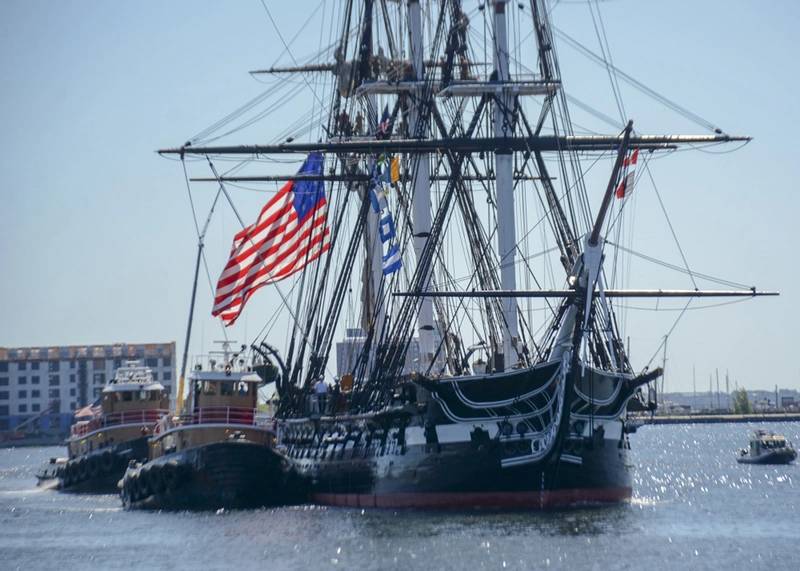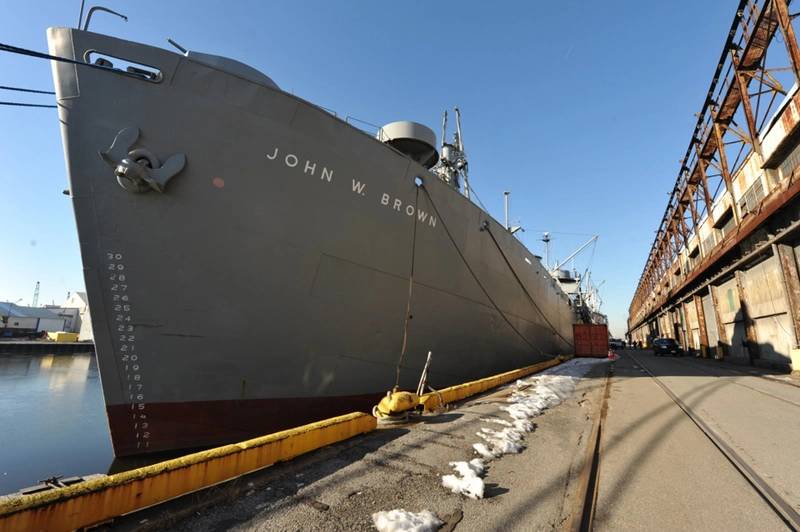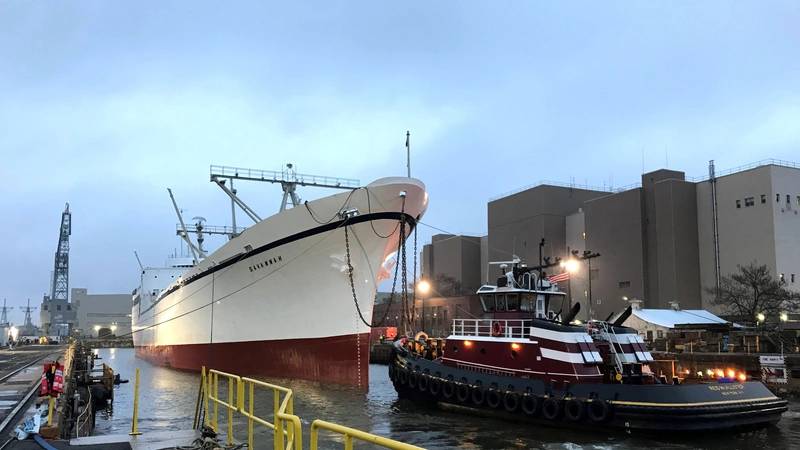Great Ships and The Ship Designer’s Curse
For the Design issue Greg Trauthwein asked me to write about a favorite ship design. I have no favorite ship design, or should say there are simply too many that are truly worthy of mention. But when considering favorite designs, ship designers (and builders) do carry a strange curse.
Unique among engineers (and artists, architects, and industrial designers) their creations only live for about 30 years. With very few exceptions, in their own life time, ship designers get to see the disassembly of most of their creations. I am not aware of any other creations that are so readily tossed aside. While cars or vacuum cleaners, are mass produced and often tossed aside in 10 years or so, the best of them do end up in museums.
Good buildings tend to last much longer and so do bridges, dams and other large engineering structures. However, only a very small portion of ships survive past 30, and even then, these are not the necessarily the best designs, they may have simply persisted in putting off their demise for random reasons.
In effect, we naval architects and marine engineers are the Christos of the engineering world. Our impact is of the fleeting kind.
Occasionally maritime nuts like us are asked to assist in the preservation of “historic” (old) vessels in perpetuity.
Undoubtedly there are ships that are so unique that they should be preserved, but preserving ships is really, really expensive and, while from a historic perspective, it is important to preserve them, I am also seeing too many maritime museums fighting for the same dollar and ending up with insufficient funds to keep their vessels from deteriorating into non-preservable states. One scary example is the deterioration of the Cruiser OLYMPIA in Philadelphia. This is a truly rare and significant vessel, and if we are going to preserve any vessels at all, this one should be high on the list.
 USS Constitution is tugged out to Fort Independence on Castle Island during ‘Old Ironsides' Chief Petty Officer Heritage Week underway. During the selects' week spent aboard Constitution, Sailors teach them a variety of time-honored maritime evolutions while living and working aboard the ship. (U.S. Navy Photo by Mass Communication Specialist 3rd Class Casey Scoular/Released)
USS Constitution is tugged out to Fort Independence on Castle Island during ‘Old Ironsides' Chief Petty Officer Heritage Week underway. During the selects' week spent aboard Constitution, Sailors teach them a variety of time-honored maritime evolutions while living and working aboard the ship. (U.S. Navy Photo by Mass Communication Specialist 3rd Class Casey Scoular/Released)
Undoubtedly, the maritime profession, community, and industry deserves a level of public recognition at the national level for its achievements and the only way to achieve that is to have physical representatives of the art available for educational purposes, but we have to be, oh so, careful at where the money is spent.
We really need to engage in some type of triage, but let me first point out that in vessel preservation there are actually a number of tiers. Small craft preservation is not a pressing problem since it is generally performed by enthusiasts, and while I do pain for the loss of some very important small craft, overall, small craft preservation is at about the same state as automobile preservation. 100 years from now we will have lost some worthy vessels, but I am sure there will still be some Alden schooners out there and some Sparkman and Stevens 12 Meters and more than a few Nat Herreshoff 12 1/2s.
Even in the larger yacht range there will be excellently preserved examples funded by the really wealthy.
And then there will be regional vessels preserved by incredible volunteers who will continue to soldier on. One of my very favorites is LST 325 in Evansville, Indiana. This is the type of vessel that can be (barely) maintained by a local community. The CHARLES MORGAN also could be fitted in this category. Another excellent example is the Barque ELISSA.
Beyond that size or complexity range, the costs just explode and a national strategy is needed. So which vessels should be included in such a national strategy?
Since I have never seen a list like that, I’ll make one, but please don’t shoot the messenger. I made this list to focus attention, not to minimize the efforts by too many people in our community in preserving our heritage.
 Members of the vessel boarding and security team at Coast Guard Sector Baltimore conduct tactical training exercises, Feb. 11, 2011, aboard the John W. Brown, a 441-foot liberty ship in Baltimore. The VBST routinely conducts training on ships throughout Baltimore to ensure their team is confident in their abilities in the event of a high-risk boarding. U.S. Coast Guard photo by Petty Officer 3rd Class Grace Baldwin.
Members of the vessel boarding and security team at Coast Guard Sector Baltimore conduct tactical training exercises, Feb. 11, 2011, aboard the John W. Brown, a 441-foot liberty ship in Baltimore. The VBST routinely conducts training on ships throughout Baltimore to ensure their team is confident in their abilities in the event of a high-risk boarding. U.S. Coast Guard photo by Petty Officer 3rd Class Grace Baldwin.
Rik’s List of Ships to be Federally Preserved
- USS CONSTITUTION. I don’t think there is any debate here and as a US Navy ship she is safe. She is historically significant, but also a lesson in clever design.
- SS JOHN BROWN. The best-preserved Liberty Ship. A tribute to too many people, nations, shipbuilders and designers.
- SS LANE VICTORY. The best-preserved Victory Ship. By too many people across the world considered to be one of the best money earners ever designed and an object of hope and renewal in post war years.
- USS OLYMPIA. A very rare vessel by herself, and with a truly illustrious history to boot.
- USS INTREPID. One can debate forever which remaining carrier is more historically significant, but INTREPID is secure at her dock in New York City. Preserving more carriers is simply doubling up.
- USS NAUTILUS. One of the nation’s greatest design and construction stunts. Hands down.
- Just one of the IOWA class battleships. So far, all four Iowa class ships are still around. But do we really need to preserve four? Despite my personal preference for the USS NEW JERSEY, I’d have to vote for the USS MISSOURI. On this deck WWII ended.
- NS SAVANNAH. I am partial to her for quite a number of reasons. If the USS NEW JERSEY will find her maker, why not put NS SAVANNAH at her dock in Camden, NJ? She was built right there at one of the great US shipbuilders. She was explicitly built as a ship of peace with no intent of turning a profit or fighting a war. Moreover, she is a reminder that commercial nuclear ship propulsion is still not off the table. And she is just too pretty for words.
I actually made a list like this a number of years ago and it was slightly different and contained 10 ships. The changes occurred when I re-examined and refined the list on further consideration. (Let’s call it design refinement).
Meanwhile, let’s also consider that certain very important designs are already lost forever. There are no preserved early container ships. Container ships changed the world, but the early ones now only exist in pictures. Maybe we should put dibs on one of the SL-7s, now serving as the Algol class US Sealift vehicle carriers. They were not the first, but they were the ships that were built when the world recognized that there was no going back to breakbulk and while not a resounding commercial success, they were the product of real commercial maritime can-do, went on to a second life serving the nation and have a great story to tell.
And this is why the SS United States is not on this list. Too much of her story is an emotional fabrication. In essence, every ship is special, but we have to be realistic. The SS United States was nothing special when she was conceived, she was nothing special by design, she already was a white elephant when the contract was signed, she was well built by Newport News, and basically worthless when she entered service. Just because she hung around does not mean she is worthy of preservation. Ironically, the liner that should have been preserved, the Normandie, was destroyed under the SS United States designer’s watch before the SS United States was designed.
Remember this list is Version 1.1. Great design is continuous refinement, we owe our profession nothing less than that.
- For each column I write, MREN has agreed to make a small donation to an organization of my choice. For this column I nominate the Independence Seaport Museum www.phillyseaport.org. The Olympia really needs and a haircut and a shave.
 NS Savannah, Credit: MARAD
NS Savannah, Credit: MARAD
















